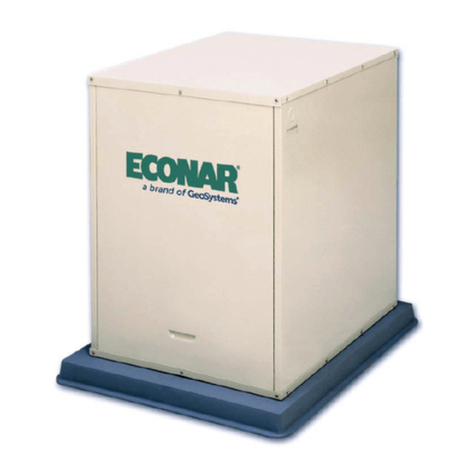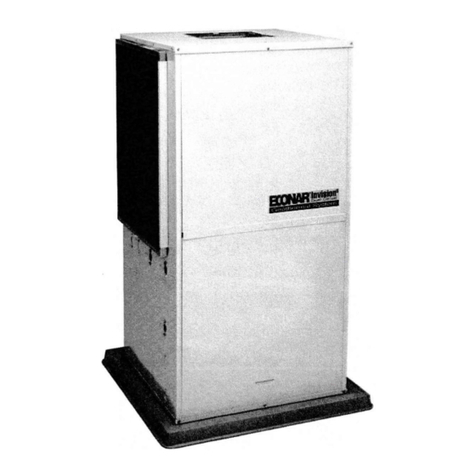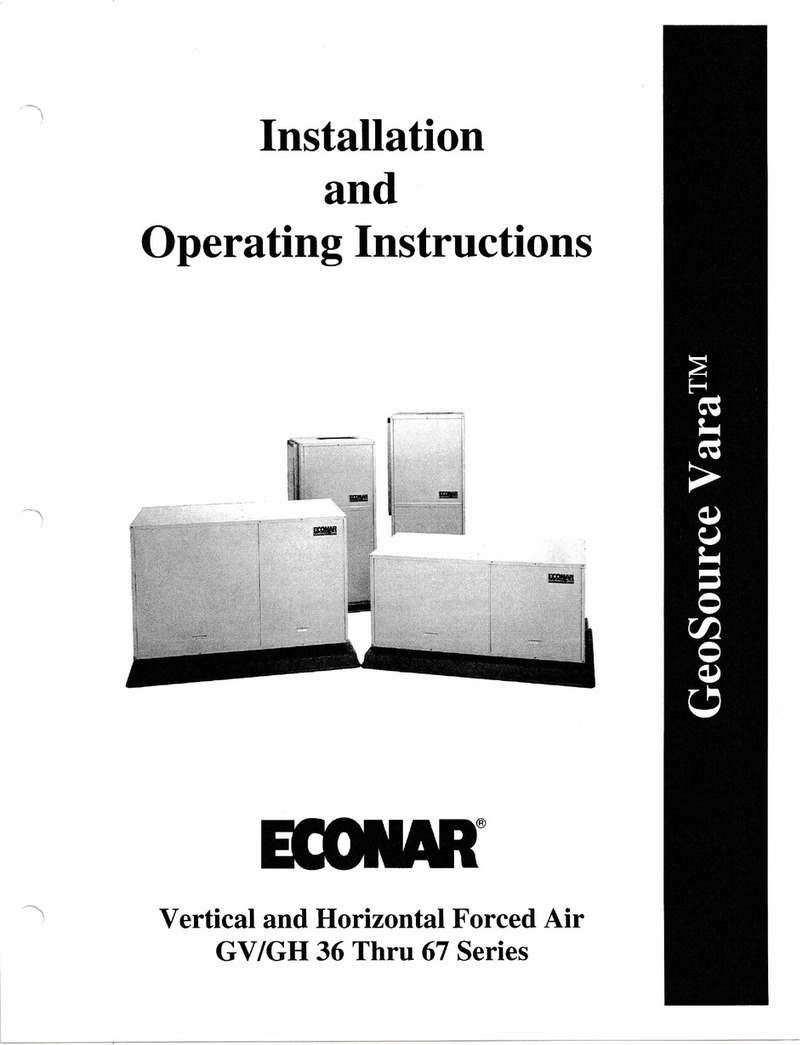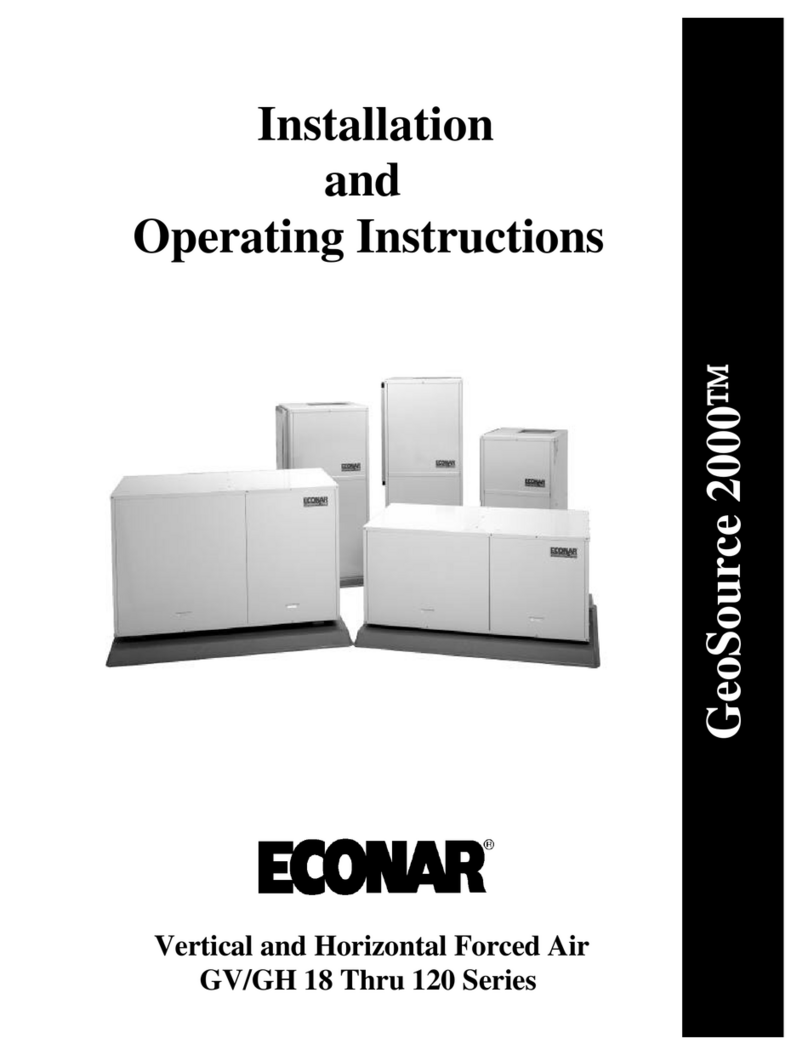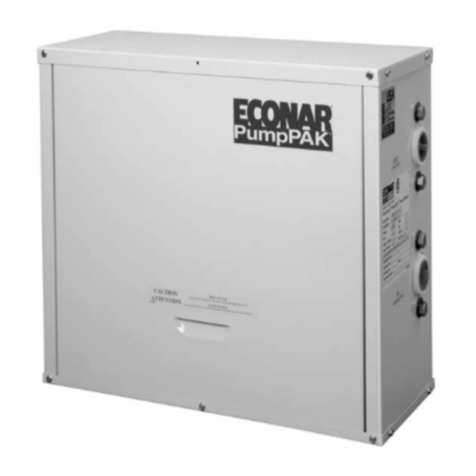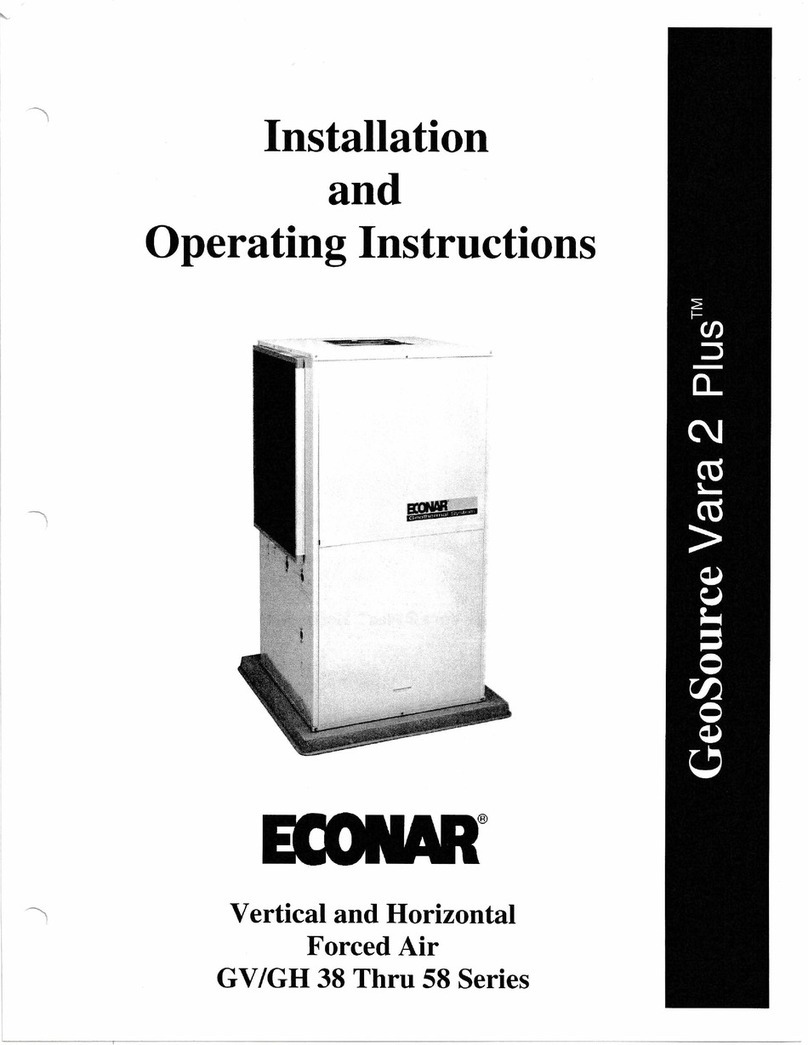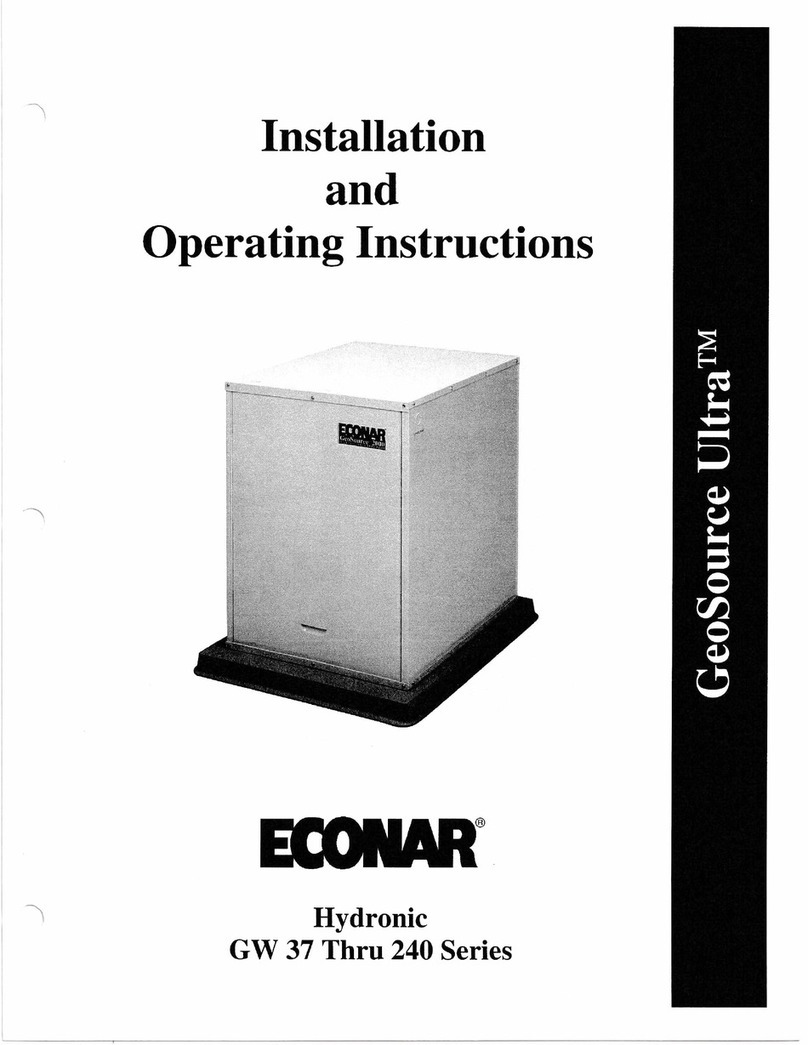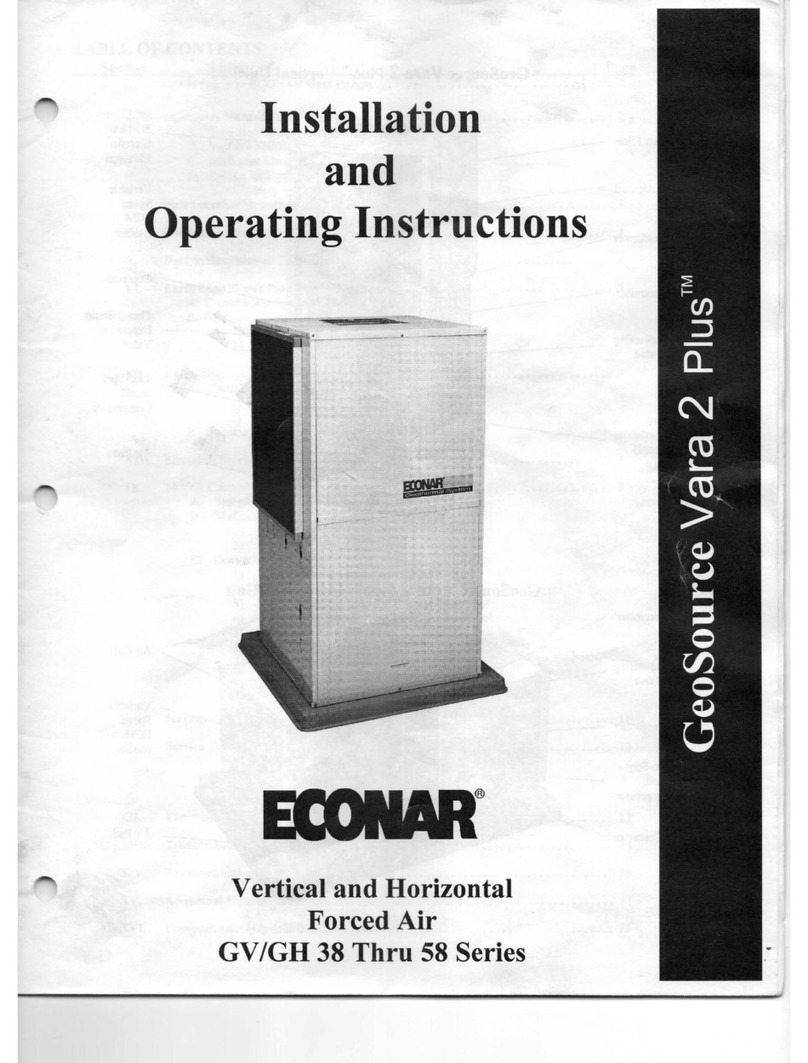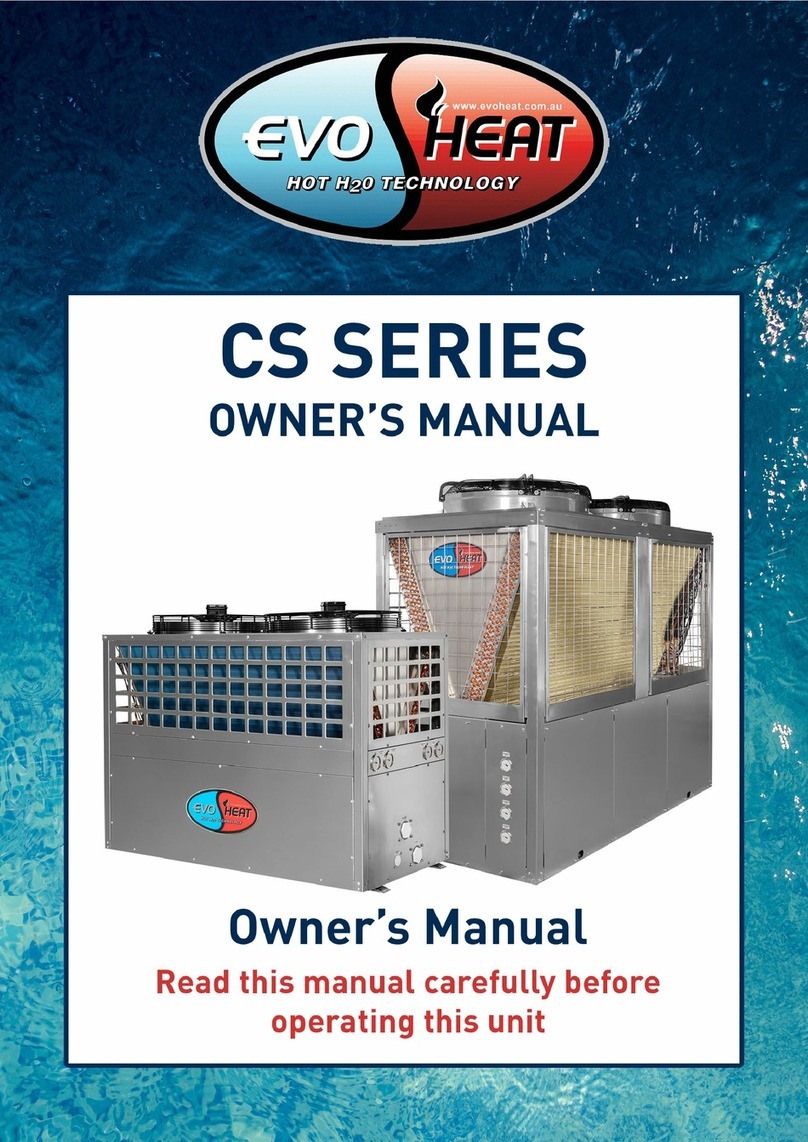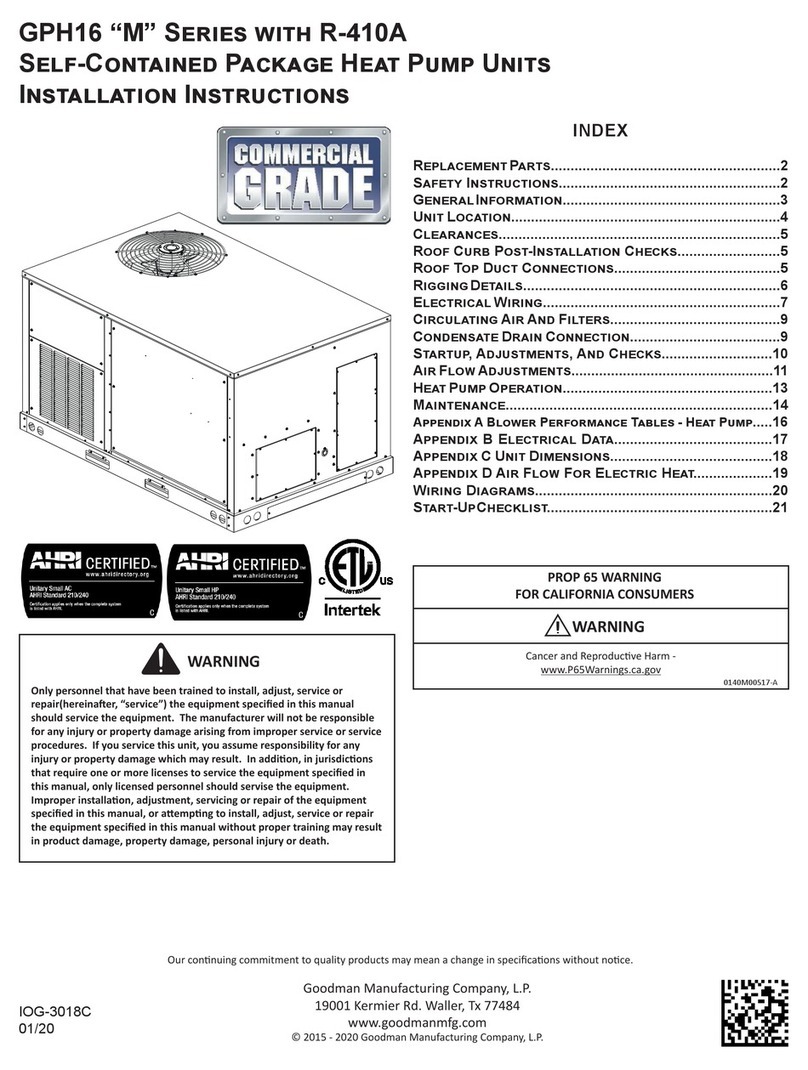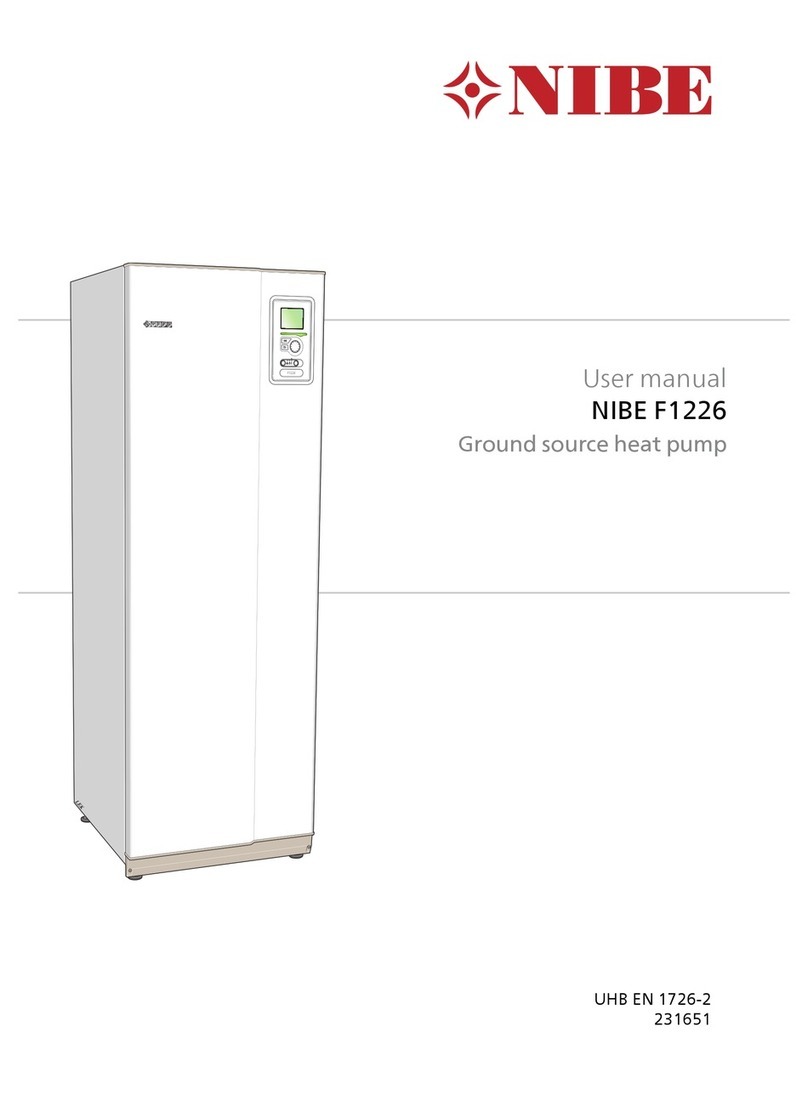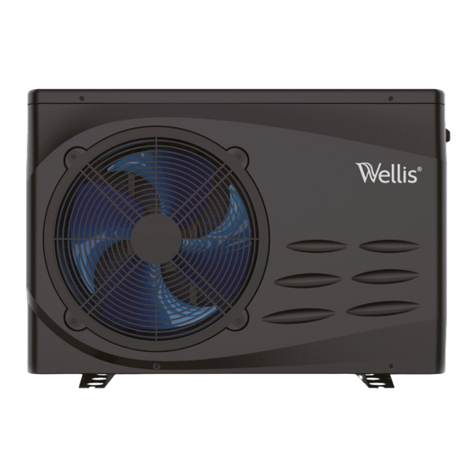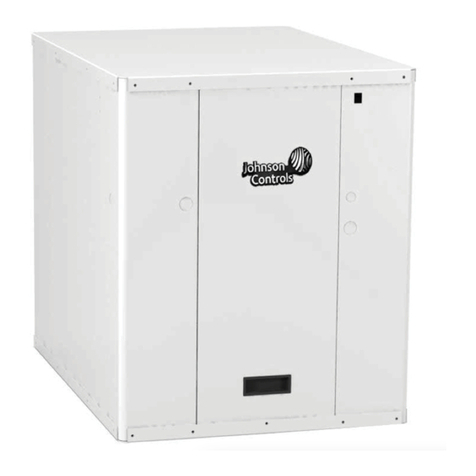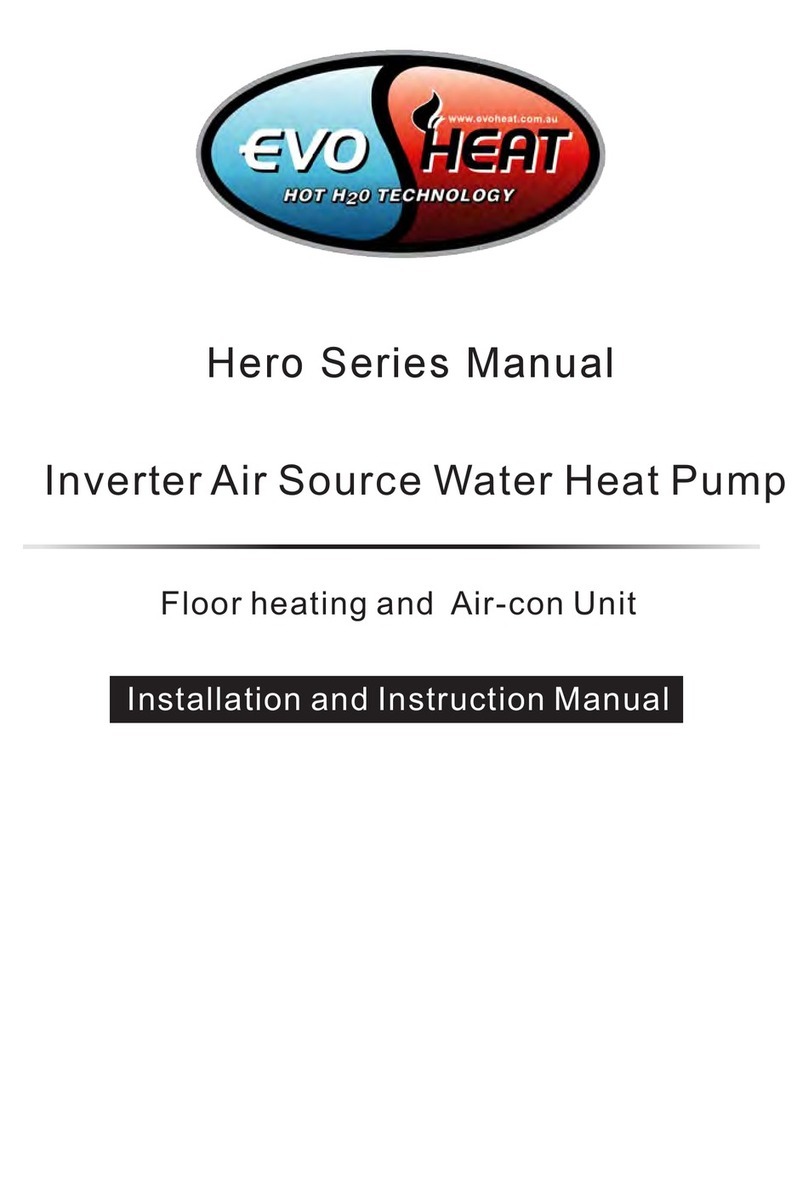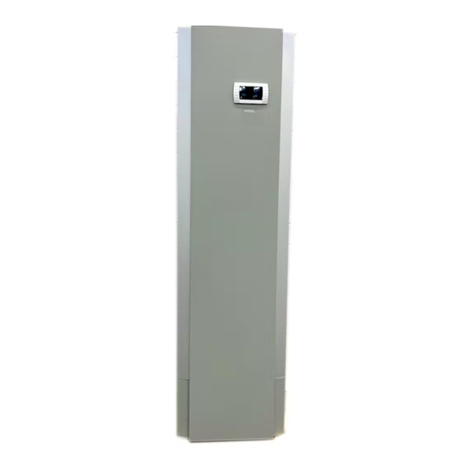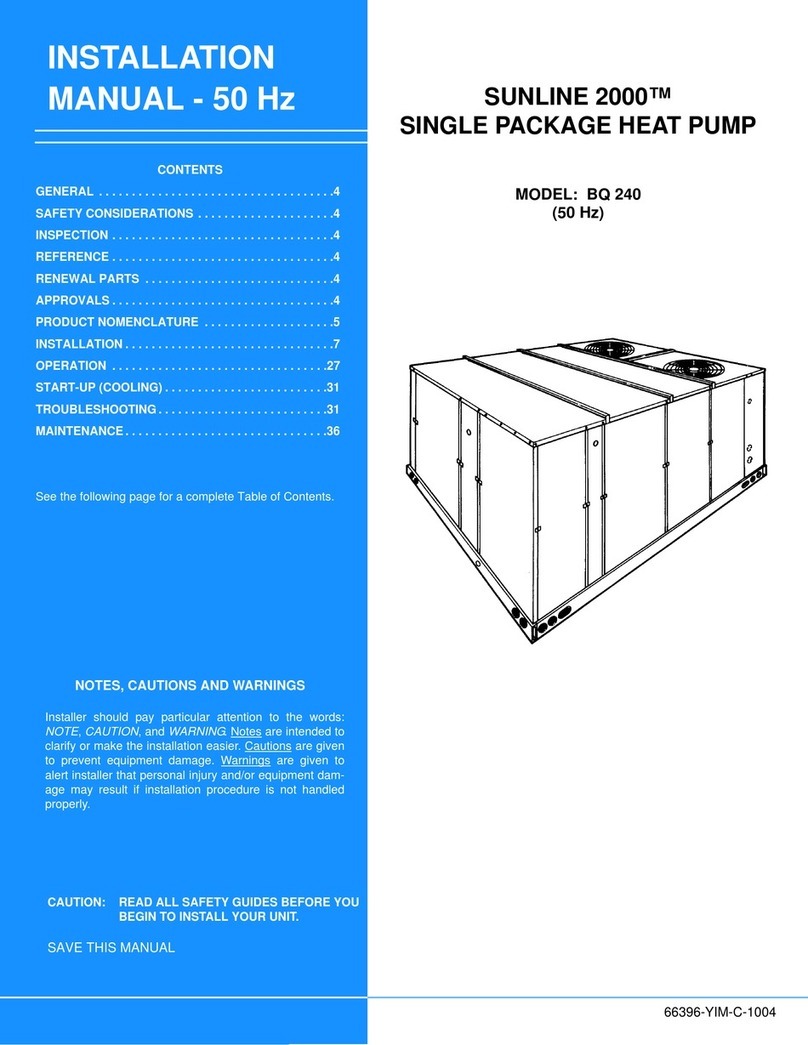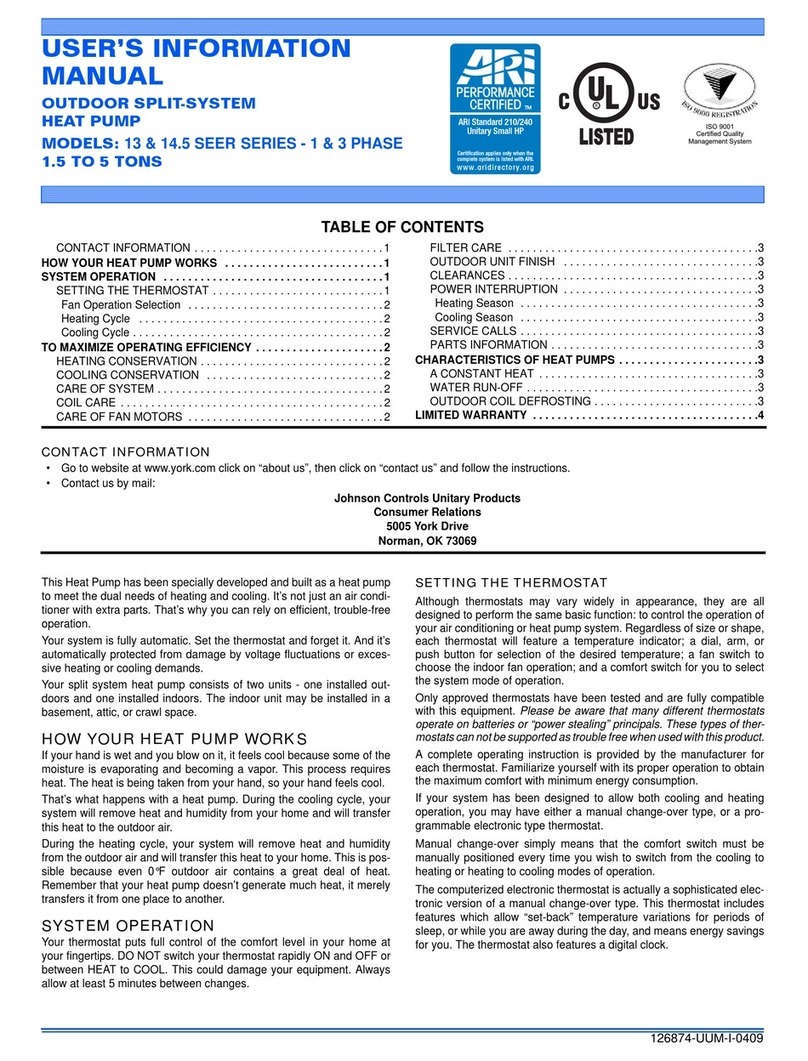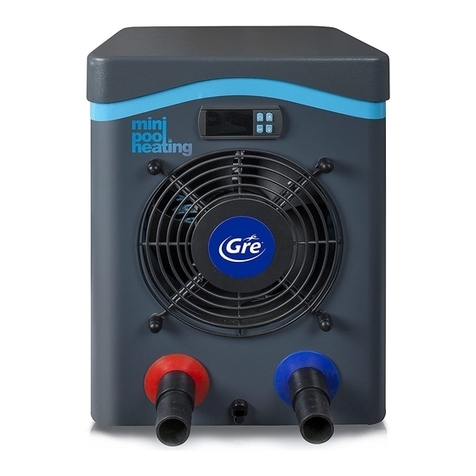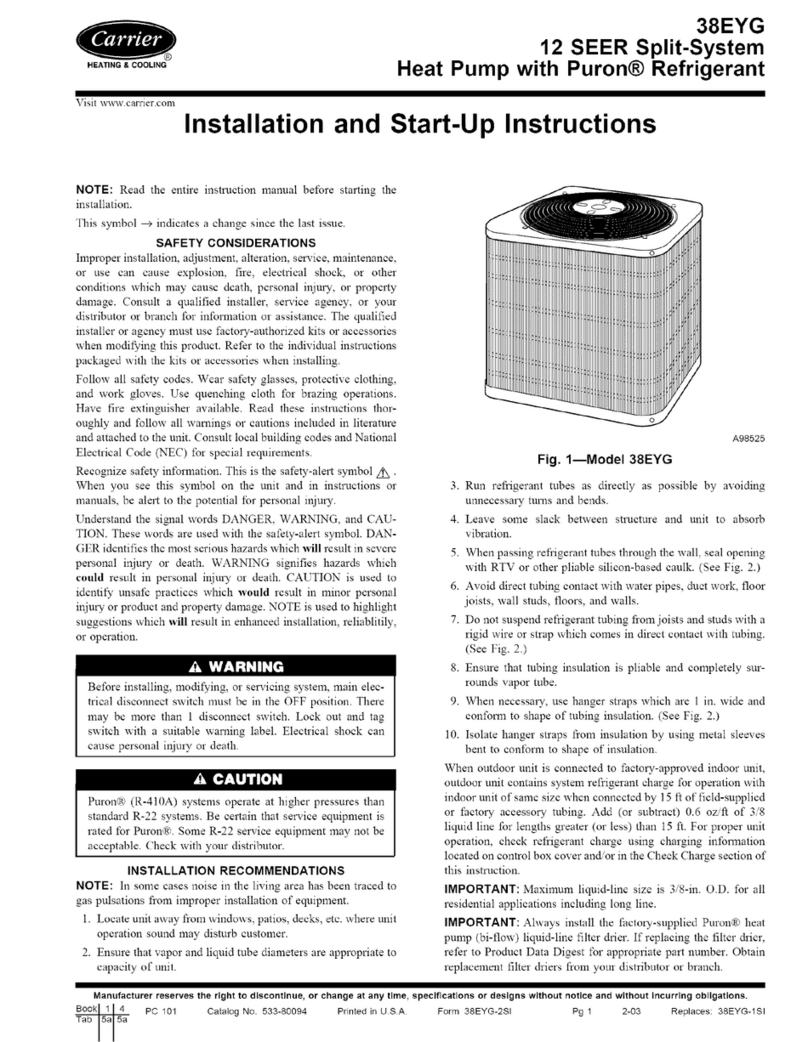
call for forced air, the heat pump will shut down for an
anti-short-cycle period, and then run in the forced air
mode until the thermostat is satisfied. At that time, if the
aquastat is still calling for hydronic heating, the heat
pump will start again in the hydronic mode after an anti-
short-cycle.
If Dip Switch #1 is set to the OFF position, hydronic
heating has the priority over forced air heating or cooling,
9. Over{Iow Detection
An optional overflow detection sensor may be added to
the GeoSource DualTEK heat pumps. This sensor is
located in the drain pan, and monitors the amount of
water accumulated in the pan. If the condensate drain
becomes clogged or kinked, and the unit is not draining
water, the sensor will shut the heat pump off in forced air
cooling for an anti-short-cycle period ofapproximately 3
minutes and 35 seconds. After this time, the heat pump
will start again if the condensate has drained. ff the water
is still present, the unit will go through anti-short-cycles
until the condensate has drained. This protection switch
keeps the condensate from overflowing the drain pan and
possibly leaking onto the floor or ceiling.
XT. STARTUP
Before applying power to the heat pump, check the
following items:
- Water supply plumbing to the heat pump is
completed and operating. Manually open the water
valve on well systems to check flow. Make sure all
valves are open and air has been purged from a loop
system. Never operate the system without correct
water supply.
- All construction dust has been cleaned up and all
sheet-rocking is completed. Construction dust,
especially sheet-rock dust, can plug the air coil and
block airflow. Make sure the filter is clean before
starting the unit.
- Low voltage wiring of the thermostat and any
additional control wiring is complete. Set
thermostat to the *OFF'position.
- All high voltage wiring is correct including fuses,
breakers, and wire sizes.
- The heat pump is located in a warm area (above
45iF). Starting the system with low ambient
temperature conditions is more difficult; do not
leave the area until the space is brought up to
operating temperatures.
- Hydronic side water temperatures are warrn enough
(50oF or above) to start in the heating mode.
- The hydronic side water flow rate is correct (shown
in Table 5). Low water temperature starting may
require flow reduction until the system is up to
operating temperature.
You may now apply power to the unit. A 4 minute 35
second delay on power up is programmed into the heat
pump before the compressor will operate. During this
time the pump relay will energize the hydronic side-
circulating pump, if the aquastat is calling for heat.
Verify that the flow rate and temperature of the hydronic
side flow are at the recommended levels. Also, during
this time, you can verify airflow with the following
procedure:
- Place the thermostat in the "pdlq g}.{rt position. The
blower should start immediately. Check airflow at
the registers to make sure that they are open and that
air is being distributed throughout the house. When
airflow has been checked, move the thermostat to the
"FAN AUTO" position. The blower should stop.
The following steps will assure that your system is
heating and cooling properly. After the initial time-out
period is completed, the red ASC indicator light on the
controller will shut off. The heat pump is now ready for
operation.
- Turn the thermostat up to its highest temperature
setting. Place the thermostat to the "HEAT"
position. The blower will start. The compressor
should start I to 2 seconds later. Ifan electronic
thermostat is used it may cause its own compressor
delay at this time, but the compressor will come on
after the time-out period.
- After the unit has run for 5 minutes, check the return
and supply air temperatures. An air temperature rise
of 25T to 35oF is normal in the heating mode, but
variations in water temperature and water flow rate
can cause variations outside the normal range.
- Turn the thermostat to the "OFF" position. The
compressor and blower will shut down in I to 2
seconds.
- Next, turn the thermostat down to its lowest setting.
Place the thermostat in the "COOL" position. The
blower will start. The compressor will start after an
anti-short-cycle period from its last shutdown. The
anti-short-cycle period is indicated by the red light
on the confroller.
- After the unit has run for 5 minutes, check the return
and supply air temperatures. An air temperature
drop of 15"F to 20"F is normal in the cooling mode
but factors mentioned in the heating section can also
effect temperature drop.
- Set the thermostat to the OFF position, and set the
aquastat to heat at its highest setting.
- After an anti-short-cycle period, the compressor will
come on.
- After the unit has run in the hydronic mode for 5
minutes, check the hydronic side return and supply
water temperatures. A water temperature rise of
10nF to 15nF is normal, but variations in entering
water temperatures and water flow rates can cause
variations.
- Set the thermostat for normal operation.
- Instruct the owner on correct operation ofthe
thermostat, aquastat, and heat pump system. The
unit is now operational.
77




















